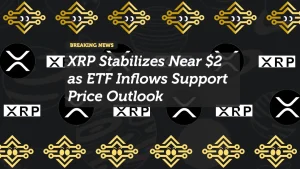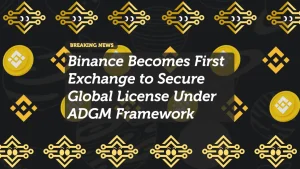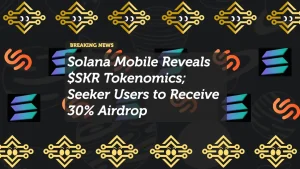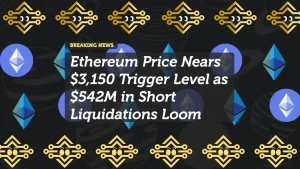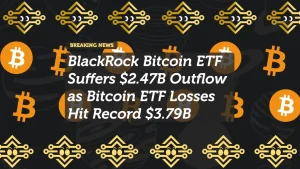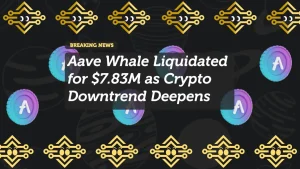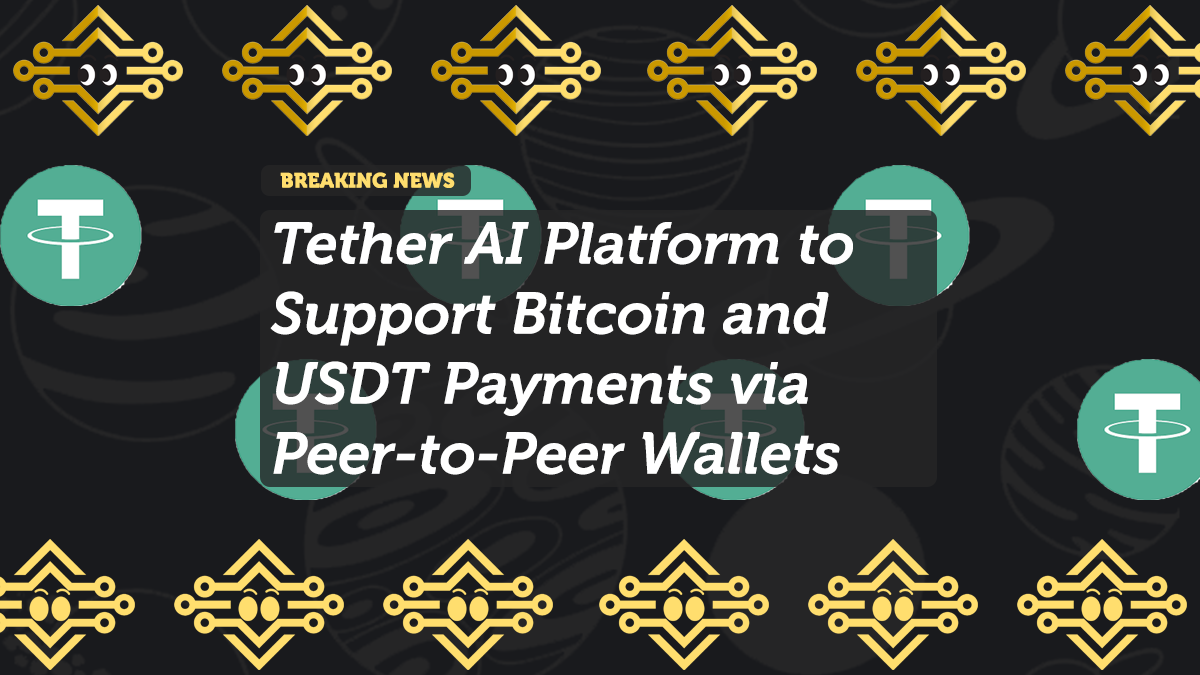
Tether AI Platform to Support Bitcoin and USDT Payments via Peer-to-Peer Wallets
In a bold fusion of cryptocurrency and artificial intelligence, Tether CEO Paolo Ardoino has confirmed that the company’s upcoming Tether AI platform will support peer-to-peer (P2P) payments in Bitcoin and USDt. The move could shake up the AI space by merging decentralized finance with intelligent automation, paving the way for AI-powered financial tools that prioritize privacy, security, and self-sovereignty.
What Is Tether AI?
Tether AI is a new artificial intelligence initiative from Tether, the issuer behind the world’s most used stablecoin, USDt (USDT). The platform is being positioned as a “personal infinite intelligence” system, aimed at combining AI capabilities with crypto infrastructure.
The project first came to light in late 2024, with Tether teasing a full launch in Q1 2025. As of early May, Ardoino has revealed more details about the system’s architecture, which is unlike any traditional AI service on the market.
Bitcoin and USDT Payments Built In
What makes Tether AI stand out is its native support for crypto payments—specifically Bitcoin and USDT. According to Ardoino, transactions will take place over an unstoppable peer-to-peer network, removing middlemen and making direct crypto-based AI payments a reality.
Imagine:
- Paying for AI-generated services using Bitcoin.
- Deploying smart assistants that autonomously handle transactions in stablecoins.
- AI platforms that don’t require banks, cards, or centralized API keys.
That’s the vision behind Tether AI.
No API Keys or Central Control: The Decentralized Edge
Unlike OpenAI, Google Bard, or Meta’s LLaMA, Tether AI won’t rely on centralized infrastructure. Ardoino emphasized that it will:
- Not use API keys
- Be modular and composable
- Be open-source
- Work on any device or hardware
This aligns with the growing movement toward AI decentralization, where data privacy, transparency, and censorship resistance are paramount.
“AI will, in the coming decades, become part of the very fabric of the universe,” Ardoino said—quoting sci-fi legend Isaac Asimov as inspiration.
Built with Wallet Dev Kit (WDK)
At the heart of the crypto payments integration is Tether’s Wallet Development Kit (WDK)—a toolkit released in November 2024.
Key features of WDK:
- Lets developers build wallets for web, desktop, and mobile
- Supports self-custodial wallets for USDT and BTC
- Allows full user control over private keys and assets
- Designed for plug-and-play integration with the Tether AI system
This means developers can integrate AI and crypto into their own applications without relying on centralized intermediaries or third-party custody solutions.
Why Self-Custody Matters
In traditional systems, platforms like PayPal or ChatGPT require users to trust the provider with sensitive payment info, personal data, and often censorship controls. Self-custody flips that model on its head.
With Tether AI:
- Users own their wallets and private keys
- Transactions happen P2P, without intermediaries
- Payment and data privacy are baked into the core design
It’s not just about sending tokens—it’s a philosophical shift toward full sovereignty over money, identity, and AI.
Tether Is Going All-In on AI
This platform isn’t a one-off experiment. Tether has restructured its business to make room for AI and data-driven services. In April 2024, it launched Tether Data, a new division dedicated to AI, peer-to-peer tech, and on-chain tools.
Other Tether AI projects in development include:
- AI Translate – A decentralized language translation tool.
- AI Voice Assistant – Similar to Siri or Alexa, but privacy-preserving.
- AI Bitcoin Wallet Assistant – Helps users manage BTC using voice and AI logic.
Tether vs. Big Tech AI: A Comparison
| Feature | Tether AI | OpenAI / Google Bard |
|---|---|---|
| Payments | BTC & USDT built-in | Credit card or API usage only |
| Custody | Fully self-custodial | Centralized servers and data |
| Privacy | High (no API keys, P2P infra) | User data stored and analyzed |
| Open-source | Yes | Partially or not open-source |
| Device compatibility | Any device/hardware | Mostly cloud-based or app-based |
This approach places Tether AI at the frontier of decentralized, privacy-first, finance-enabled artificial intelligence.
What This Means for Crypto and AI in 2025
Tether is known for making bold moves, and this latest venture could disrupt both the crypto wallet space and the AI assistant landscape.
Potential implications:
- Tether AI wallets may rival traditional fintech tools like Venmo or PayPal.
- Bitcoin could be used for microtransactions within AI platforms (think: tipping, paying per query, etc.).
- Decentralized AI assistants could give users greater privacy than Big Tech ever could.
- Developers may start building crypto-integrated AI dApps faster using WDK.
As other companies like BlackRock explore AI and tokenization of real-world assets (RWA), Tether’s hybrid of AI and crypto wallets could set a new precedent for utility-focused innovation.
Final Thoughts: Will Tether AI Deliver?
Tether AI is shaping up to be more than a gimmick. If it delivers on the promises of P2P payments, decentralized compute, and composable AI apps, it could become a key player in the Web3 + AI convergence.
Still, much remains to be seen. Questions linger around:
- The quality of the AI models
- User adoption and developer traction
- Regulatory scrutiny for crypto-integrated AI tools
But one thing’s for sure: Tether isn’t just a stablecoin company anymore.
FAQs
Q: What is Tether AI?
Tether AI is a decentralized artificial intelligence platform by Tether that integrates Bitcoin and USDT payments through P2P infrastructure and self-custodial wallets.
Q: How can I use crypto with Tether AI?
Users can make BTC and USDT transactions through wallets built using Tether’s Wallet Development Kit (WDK), which supports mobile, desktop, and web applications.
Q: Is Tether AI open-source?
Yes, Tether AI’s runtime is fully open-source and composable, allowing developers to build or modify tools on top of it.
Q: When is Tether AI launching?
While no official date has been given, it is expected to launch sometime in 2025, following the WDK’s rollout and related tool announcements.











